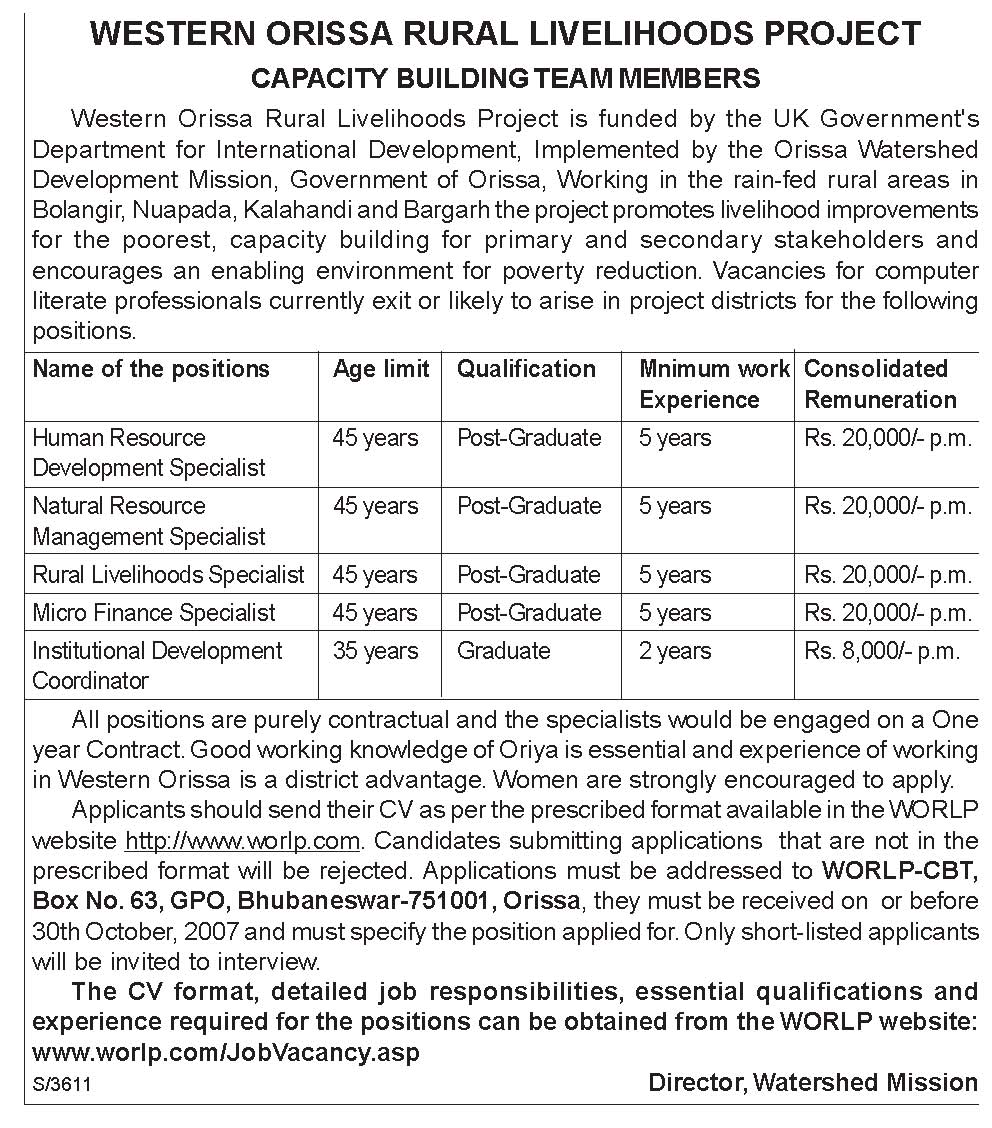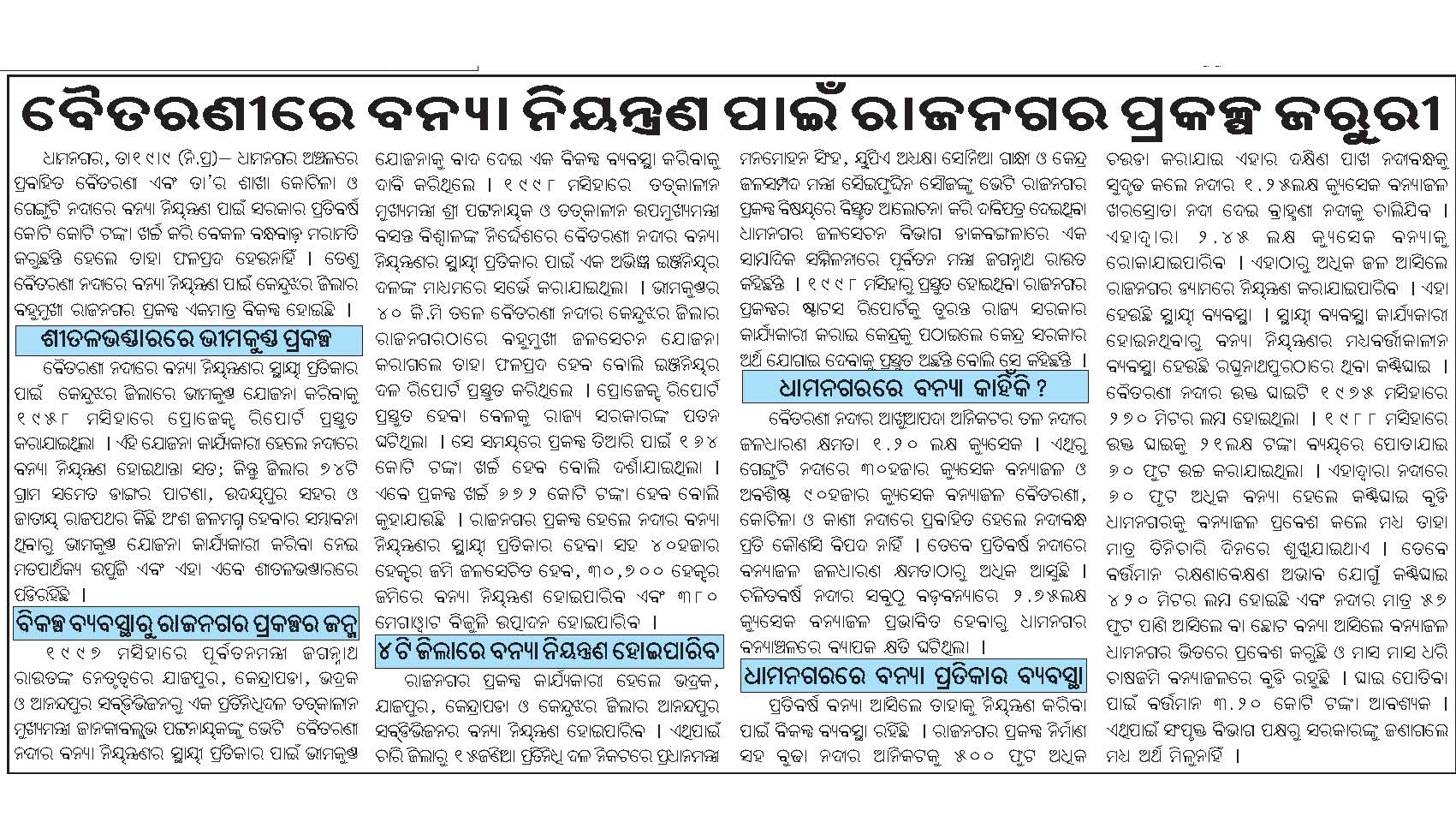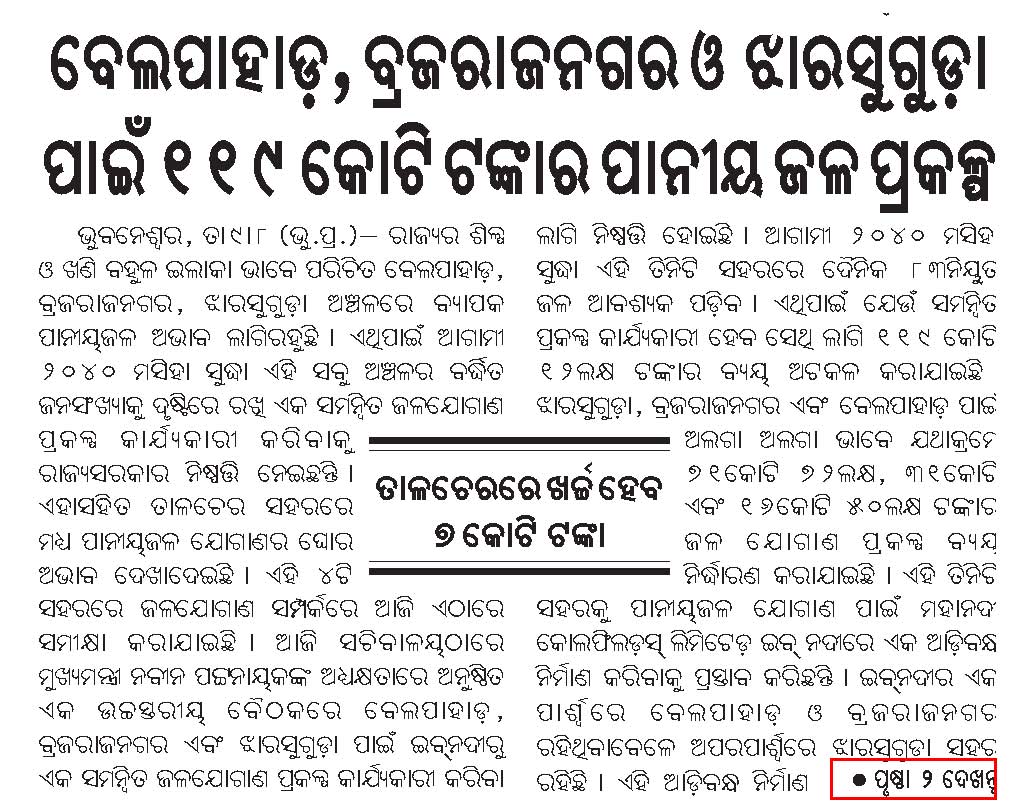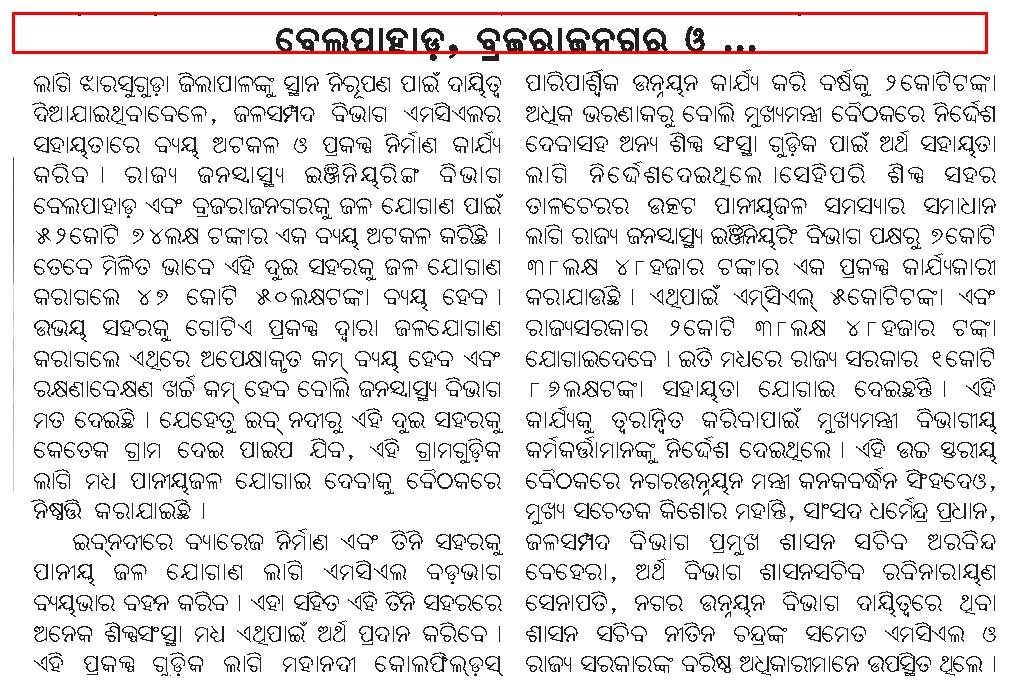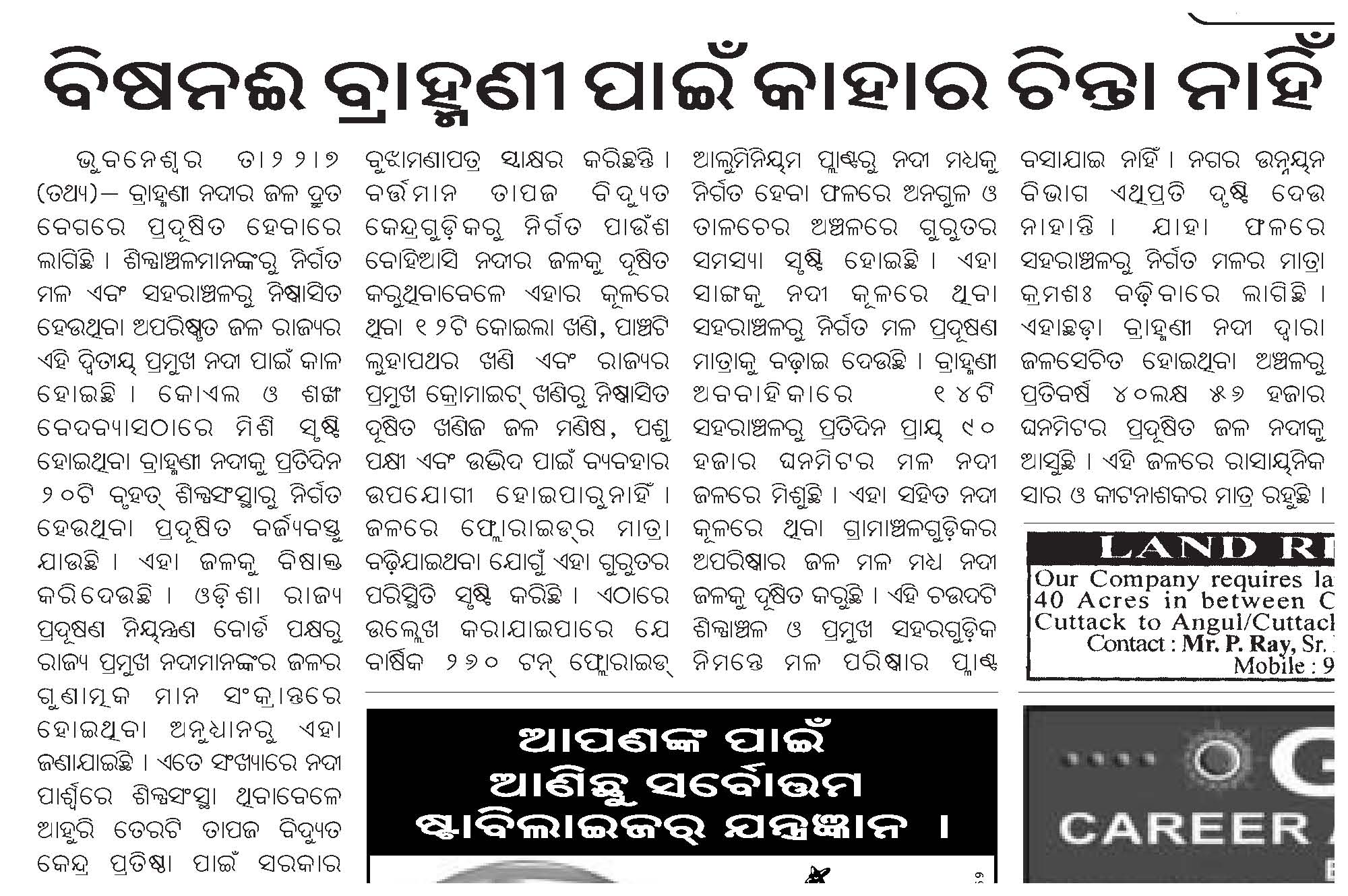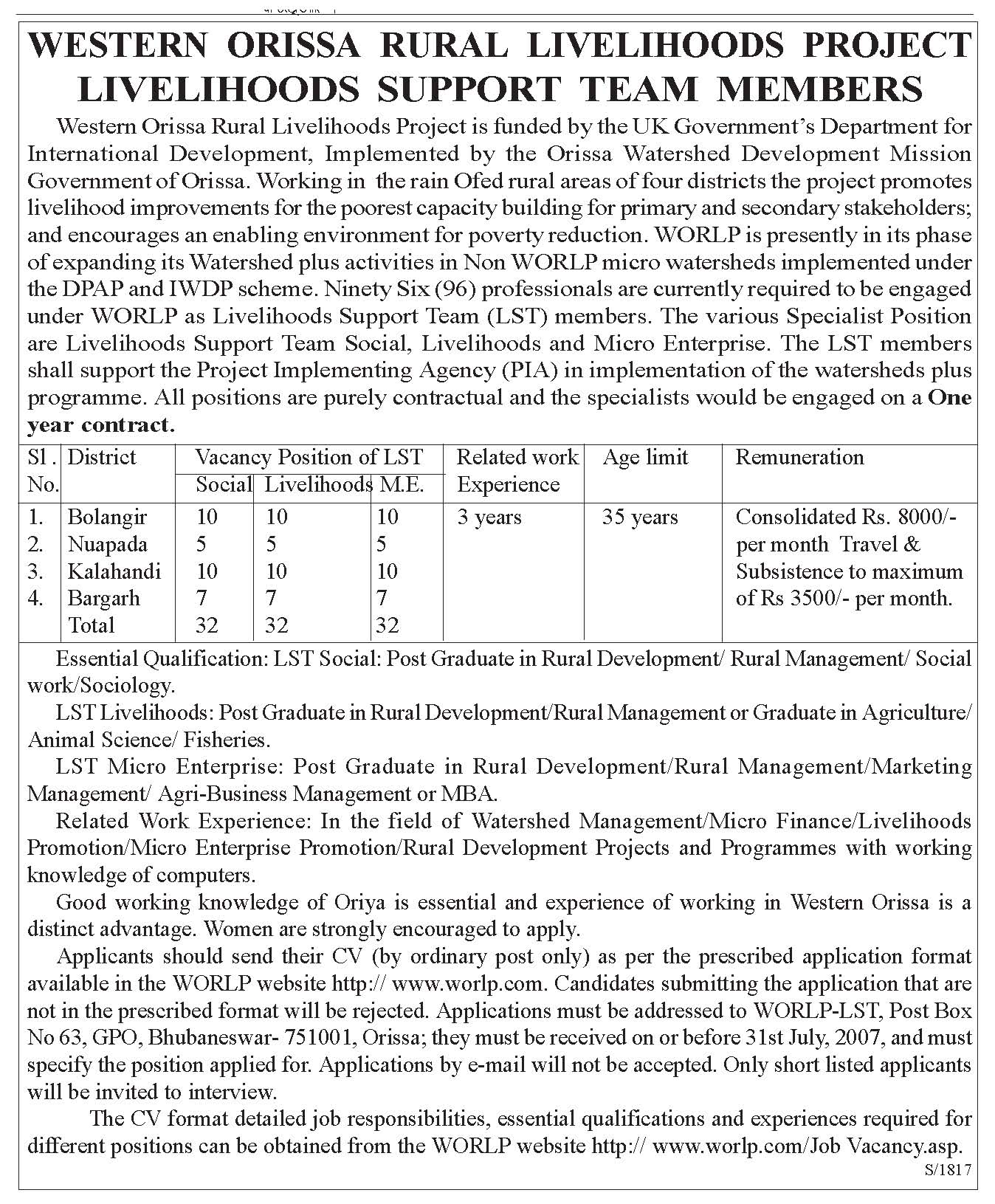Following is from their web page.
The Orissa Watershed Development Mission (OWDM) is an autonomous State level agency constituted under the Department of Agriculture, Government of Orissa, responsible for planning, implementing and monitoring all Watershed Development programmes in the State. The OWDM was constituted by the Govt. of Orissa as a registered Society and came into existence on 30th June, 2000. Recognizing the importance of Watershed Development as a platform for poverty alleviation, the Government of Orissa created the OWDM to give a “Strategic Mission” focus to the programme. The mission is intends to provide the required focus, coordination and operational flexibilities in implementation of watershed concepts and approaches in the State.
Vision
To bring about social and economic transformation of the people in the State of Orissa by creating an enabling environment for development of sustainable natural resources, effective social mobilization and people centered institutions through Watershed based approaches.
Mission
To facilitate sustainable rural development in the State through watershed movement with a focus on marginalized and vulnerable rural sections of the society through sustainable initiatives, bringing in convergence in various developmental efforts, establishing new processes and practices, encouraging innovations through learning, building people-centered institutions and play catalytic role in the processes and policy formulation with the sole objective of improving livelihood options of the community with efficient natural resource management.
The OWDM acts as a facilitating organization with a responsibility of creating knowledge and resource by collaborating with the Agencies having expertise in various aspects of Watershed Development and functioning in a integral part of the Govt. of Orissa having adequate operational autonomy regarding interpretation of guidelines and accountability for improving the quality and process in watershed development programmes.
Programmes:
IWDP: Integrated Wasteland Development Project (IWDP), a Centrally Sponsored scheme of GoI, Ministry of Rural Development, is being implemented in 23 districts of the State. 501 micro-watersheds are currently under implementation, of which, 246 projects sanctioned prior to 1.4.2000 were with 100% grant from GoI. After 1.4.2000, the funding pattern between Government of India and State Government is in the ratio 11:1 at the new cost norm of Rs.6000/- per Ha. The total outlay of these projects is Rs.14807.15 lakh for treatment of wasteland area of 2.78 lakh Ha.
DPAP: Drought Prone Area Programme (DPAP), a Centrally Sponsored scheme of GoI, Ministry of Rural Development is being implemented in 8 districts of Orissa covering 47 identified drought prone blocks. 800 micro watershed projects are currently under implementation, of which, 192 projects sanctioned prior to 1.4.2000 were with funding pattern of 50:50 basis between GoI and State. The remaining 638 projects have been sanctioned after 1.4.2000 with the funding pattern of 75:25 basis at the new cost norm of Rs.6000/- per Ha. The total outlay of these projects is Rs.22740.25 lakh for treatment of 4.23 lakh Ha.
ACA: Out of Additional Central Assistance (ACA) of Planning Commission under Revised Long Term Action Plan (RLTAP) for KBK districts (Koraput, Nabarangpur, Rayagada, Malkangiri, Bolangir, Sonepur, Kalahandi and Nuapada), 314 micro watershed projects have been taken up in KBK districts since 2002-03. The total outlay of 314 micro watershed projects is Rs.10057.00 lakhs with a treatable area of 1.67 lakh Ha. This programme aims at drought proofing and improving the moisture regime in 314 micro watersheds with a view to improving agricultural productivity.
CDP: Coffee Development Programme for small growers in Koraput and Rayagada districts was taken under the RLTAP for KBK districts since 2002-03. The programme aims at providing gainful employment and a sustainable livelihood to tribal farmers through Usufruct / Dafayati rights enabling them to grow and own a small plantation of higher remunerative crop. In the first phase 2000 Ha (1000 hectare in each district) were programmed. Now, additional plan for expansion of this programme to another 8000 Ha. 4000 hectares in each district has been approved by Government for implementation. The total outlay of this programme is Rs.6721.21/- lakhs.
NWDPRA: National Watershed Development Projects for Rainfed Areas (NWDPRA) is in operation in the State since 1990-91 with a broad objective of resource management for enhancing of agricultural productivity and production to bio-mass on sustainable basis and restoration of ecological plans in rainfed areas.
RVP: River Valley Project (RVP) is being implemented in the catchment of inter state River Valley Project namely Hirakud, Machkund-Sileru, Rengali-Mandira and Upper Kolab with a view to combat land degradation problems and to prevent silt inflow into the reservoir. It is now proposed to continue treatment to saturate 29 ongoing watersheds and start treatment of 7 nos. of new watersheds at an outlay of 497.84 lakh over an area of 9720 ha.
